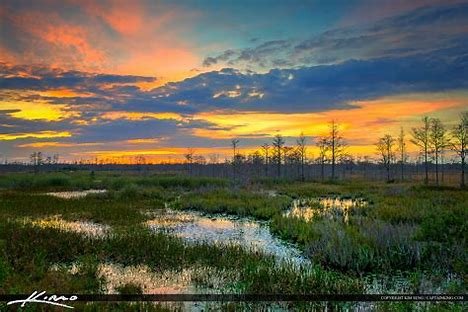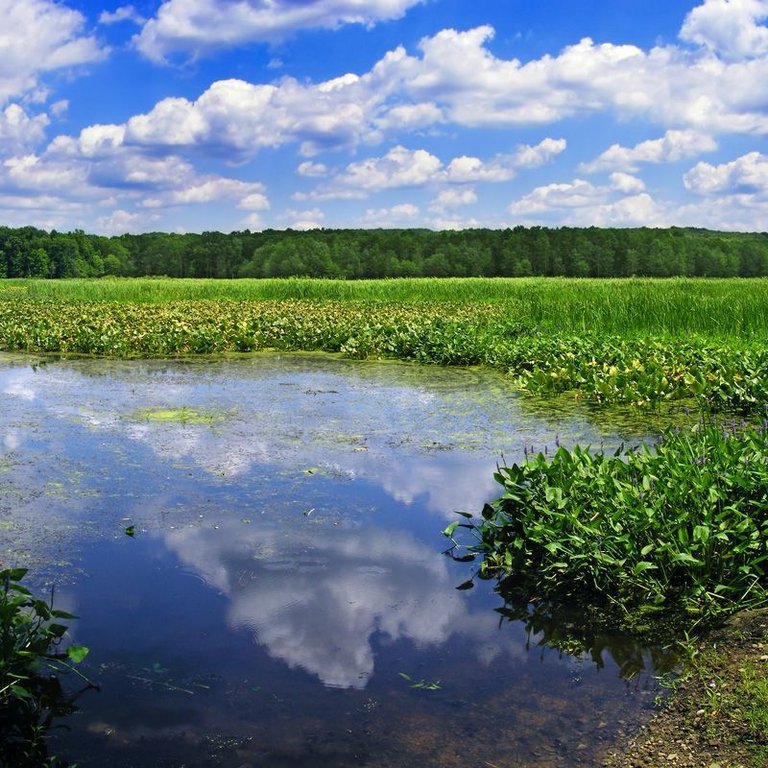Wetlands are important to our environment. Wetland soils are full of fresh or saltwater. Wetlands are in the Arctic tundra, tropical deltas, everywhere except Antarctica. They have soggy areas, living plants, animals, and are home to plants, insects, mammals, birds, and reptiles.

You can find wetlands anywhere that there is water. Wetlands climates range from warm, humid tropical, and frigid tundra. Some wetlands are created after a heavy rainfall. Wetlands can have marshes, bogs, and swamps. A swamp is a freshwater wetland that is a spongy muddy surface and sometimes has a bigger water content that a marsh. Marshes are found around rivers, ponds and lakes. Some wetlands are found where soil and rocks hold water.
There are many different types of animals that live in the wetlands. The shoebill bird is called shoebill because their bill is a shape of a shoe. They can stand very still for hunting. Shoebills keep their balance until they find food that they can catch. They clatter a greeting at the nest when calling for food. They grow to be 5 feet tall and 4 feet long, are bluish grey, and live up to 35 years. They like the wetlands because they can hide. Shoebills eat lungfish, larger fish, water snakes, lizards, turtles, rats, frogs, and young crocodiles at night. American crocodiles have tough scaly skin. They are green with long slender snouts. They camouflage in the bushes, get warm by lying in the sun, and get cool when it is in the water. A crocodile length is 7-15 feet, weight is 150-450 pounds, and their life spawn is 60-70 years. They are shy. They are facing extinction because they are being hunted for their hides. Crocodiles eat crabs, prawns, fish, frogs, insects, pigs, birds, turtles, and other crocodiles. They sleep with their mouth open, stay awake during the day and night, and sleep in the water or on land. Beavers make homes out of wood and this changes forests into wetlands. They have big front teeth that are orange, small front feet, and big webbed back feet. They work very hard and weigh up to 60 pounds. They are important to wetland because they can make homes for other animals by building dams. They don’t have any prey because they don’t eat animals. They eat only trees and plants, and are nocturnal. One beaver can trim down 200 trees a year.

There are also many different types of plants that live in the wetlands. Rice is a plant that grows in the wetlands. It is a tiny grain. Rice seeds are planted into rice paddies, and seeds adapt by receiving nutrients from the water. Rice needs lots of water to grow. It is hard work to cultivate but cheap to plant. There are over 40,000 different kinds of rice. It is harvested once a year and it is nutritious to eat. Mangroves have roots and spikes around the plant. They adapt in both fresh and salt water. They keep the water clean and clear. Mangroves protect the shoreline and protect endangered species by providing a safe place to feed and nest. Cattails have brown flowers that have fluffy seeds, flat leaves, and grow up to 10 feet tall. They can grow and spread fast with sunshine and shallow water. They provide homes for birds, insects, and fish. Their roots can be used for toothpaste.
Wetlands are an important ecosystem that covers six percent of earth. They are located anywhere that there is water. It provides homes for wildlife, plants, and helps endangered animals survive. Wetlands protect our environment by cleaning our water and protecting our shorelines.

Appreciate Beauty @senseicat
A wetland is a land area that is saturated with water , either permanently or seasonally, such that it takes on the characteristics of a distinct
ecosystem . The primary factor that distinguishes wetlands from other land forms or water bodies is the characteristic vegetation of aquatic plants, adapted to the unique hydric soil. Wetlands play a number of roles in the environment, principally water purification, flood control, carbon sink and shoreline stability. Wetlands are also considered the most biologically diverse of all ecosystems, serving as home to a wide range of plant and animal life.
Wetlands occur naturally on every continent..
Nice post I love that post🛐🛐
very perfect
beautiful scenery,this is awesome @senseicat l very like
Looks unreal!!! Very beautiful.
love that first picture!
Beautiful scenery
How do you thing my picture seinse ?? You like

Thanks to upvote my post
Very good i like
by utilizing the balance of nature, living beings can thrive and live according to their natural state
interesting blog! love your pictures especially the first one!
Hey .. @ senseicat I love your beautiful panorama post
send regards for success.post beautiful scenery amazing @senseicat, thanks for sharing.